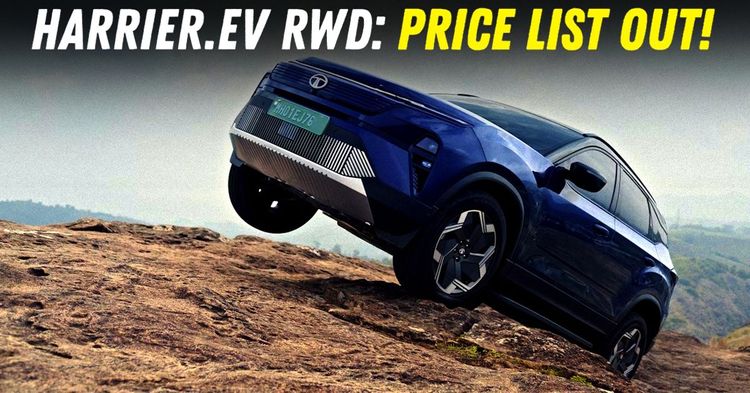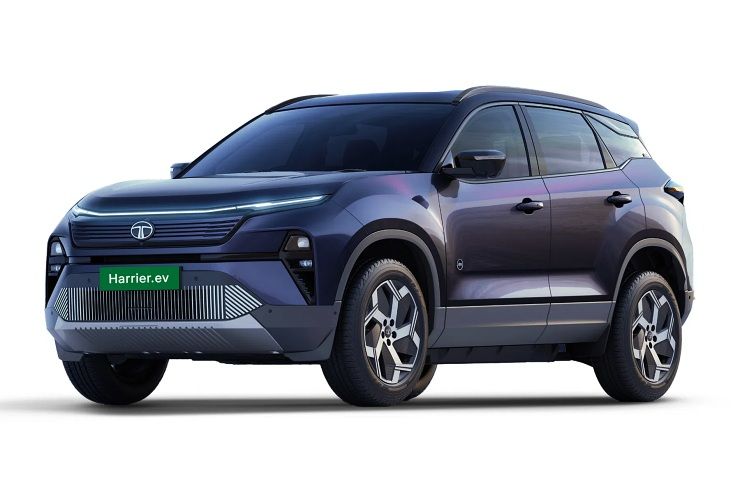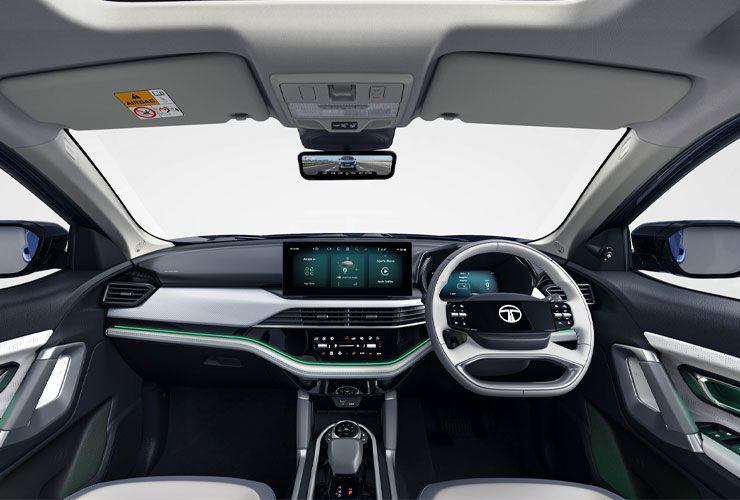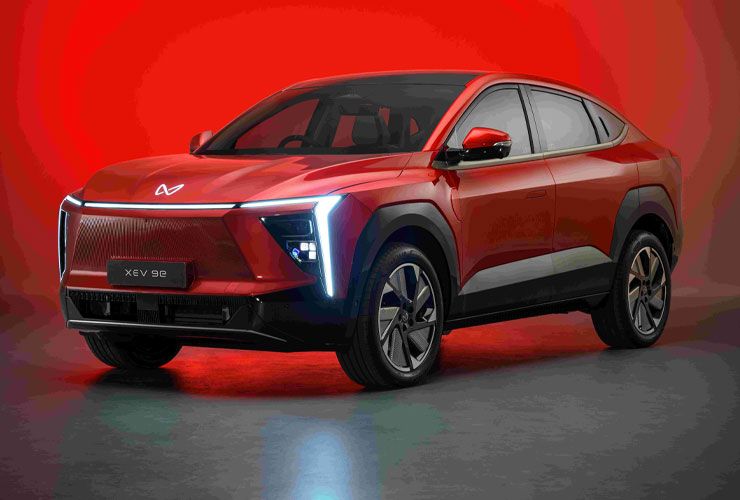Tata Harrier.EV Electric SUV: Full Price List Of Rear Wheel Drive (RWD) Variants Out


Tata Motors has announced the prices for its Harrier EV rear-wheel-drive variants, starting at Rs 21.49 lakh for the Adventure 65 model and going up to Rs 27.49 lakh for the Empowered 75 variant. The five RWD variants include the Adventure 65 at Rs 21.49 lakh, Adventure S 65 at Rs 21.99 lakh, Fearless+ 65 at Rs 23.99 lakh, Fearless+ 75 at Rs 24.99 lakh, and the range-topping Empowered 75 at Rs 27.49 lakh. Bookings open on July 2nd, with quad-wheel-drive pricing to follow on June 27th.

This pricing is notable because it places the Harrier EV in direct competition with both established petrol-diesel SUVs and the growing electric SUV segment. The Harrier EV’s entry price is around Rs 6.5 lakh higher than the base diesel Harrier, which starts at Rs 15 lakh. However, this price difference reduces at higher trim levels, making the EV a more compelling option for those seeking advanced features and technology.
Tata’s pricing strategy for the Harrier EV highlights its belief in the electric SUV market’s potential. The 65 kWh battery pack offers an estimated real-world range of 480 to 505 kilometres, while the larger 75 kWh pack claims up to 627 kilometres on a single charge. This range is competitive in the current market and aligns with the growing public charging infrastructure, which now includes over 26,000 stations nationwide as of April 2025.

The rear-wheel-drive Harrier EV delivers 235 bhp in the 65 kWh variant. The 75 kWh versions step up to 390 bhp and 504 Nm of torque. These figures put the Harrier EV among the more powerful options in its segment, with performance that is superior to traditional petrol engines and the added benefit of instant torque from its electric motor.
The Tata Harrier EV RWD and Mahindra XEV 9e are closely matched in terms of starting price, with the Harrier EV beginning at Rs 21.49 lakh and the XEV 9e at Rs 21.90 lakh. However, the XEV 9e offers a slightly larger battery pack in its top variant (79 kWh versus the Harrier’s 75 kWh) and claims a higher maximum range of up to 656 km, while the Harrier EV’s real-world range is expected to be between 480 and 505 km for its 65 kWh variant and up to 627 km for the 75 kWh version. In terms of charging, the XEV 9e supports rapid charging with a 180 kW DC charger, allowing a quick top-up, while the Harrier EV supports up to 120 kW DC fast charging.

Performance-wise, the XEV 9e’s top variant produces 286 bhp and 380 Nm of torque, whereas the Harrier EV’s dual-motor setup [prices yet to be revealed] delivers a combined output of nearly 400 bhp and 504 Nm of torque, giving it a clear advantage in outright power and all-wheel-drive capability in higher trims. The XEV 9e stands out for its coupe-like design, longer wheelbase, and a tech-focused interior featuring a triple-screen dashboard, while the Harrier EV emphasises off-road capability and a more traditional SUV stance, including features like multiple terrain modes and a higher wading depth.
Both models cater to buyers seeking a premium electric SUV experience, but the XEV 9e leans towards longer range and a tech-rich cabin, while the Harrier EV focuses on stronger performance, versatility, and off-road credentials. The final choice will likely come down to individual preferences around range, driving dynamics, and interior features.
Initial reviews suggest that the Harrier EV delivers strong performance. The higher variants with dual-motor setups can accelerate from 0 to 100 kmph in 6.3 seconds. Early tests also indicate that the Harrier EV maintains good off-road ability, which is not always the case with electric SUVs.

The Harrier EV’s pricing and features reflect a shift in how electric vehicles are presented to buyers. Rather than being seen as a compromise, the Harrier EV offers performance, technology, and features that are at least on par with, if not better than, its petrol-diesel sibling. The inclusion of advanced driver assistance systems, premium interiors, and modern infotainment technology supports the higher price point.
This approach suggests that the electric vehicle market is maturing, with buyers increasingly open to paying a premium for genuine improvements. Tata’s strategy with the Harrier EV indicates confidence in the market’s readiness for premium electric SUVs that do not require significant compromises.
With charging infrastructure expanding and consumer interest in electric vehicles rising, the Harrier EV’s pricing positions it as a notable option in the premium SUV segment. Its arrival marks a significant step in the evolution of electric mobility, offering a blend of practicality, performance, and advanced features that should appeal to a broad spectrum of buyers.